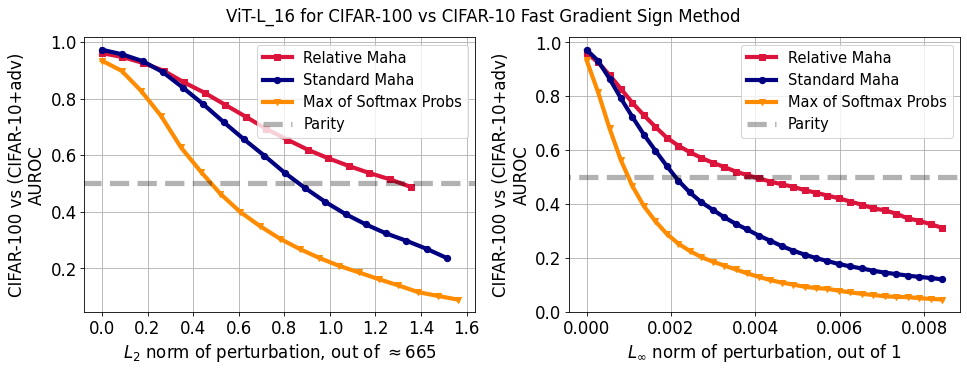Adversarial vulnerability of powerful near out-of-distribution detection
There has been a significant progress in detecting out-of-distribution (OOD) inputs in neural networks recently, primarily due to the use of large models pretrained on large datasets, and an emerging use of multi-modality. We show a severe adversarial vulnerability of even the strongest current OOD detection techniques. With a small, targeted perturbation to the input pixels, we can change the image assignment from an in-distribution to an out-distribution, and vice versa, easily. In particular, we demonstrate severe adversarial vulnerability on the challenging near OOD CIFAR-100 vs CIFAR-10 task, as well as on the far OOD CIFAR-100 vs SVHN. We study the adversarial robustness of several post-processing techniques, including the simple baseline of Maximum of Softmax Probabilities (MSP), the Mahalanobis distance, and the newly proposed \textit{Relative} Mahalanobis distance. By comparing the loss of OOD detection performance at various perturbation strengths, we demonstrate the beneficial effect of using ensembles of OOD detectors, and the use of the \textit{Relative} Mahalanobis distance over other post-processing methods. In addition, we show that even strong zero-shot OOD detection using CLIP and multi-modality suffers from a severe lack of adversarial robustness as well. Our code is available at https://github.com/stanislavfort/adversaries_to_OOD_detection
PDF Abstract

